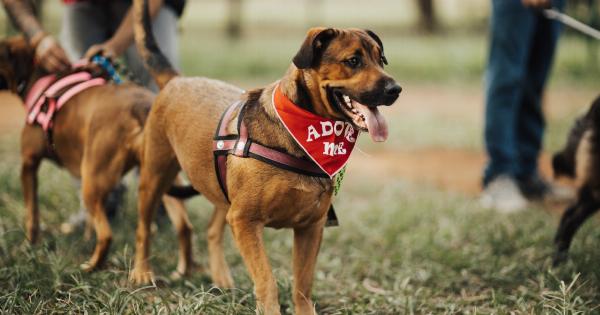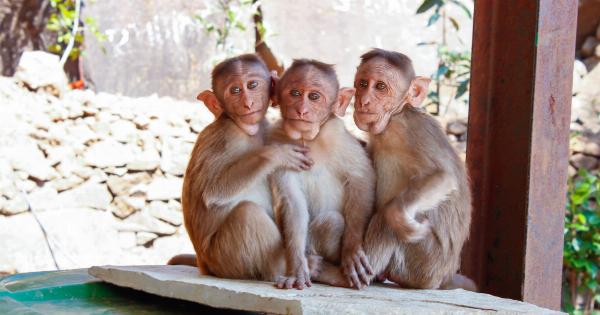Dogs and cats are two of the most popular pets in the world. While they are both beloved companions, they also exhibit distinct behaviors and characteristics. In this article, we will explore 10 ways in which dogs and cats are similar and different.
1. Communication
Both dogs and cats use various forms of communication to interact with their owners and other animals. However, their methods differ significantly. Dogs primarily communicate through vocalizations, body language, and wagging their tails.
They bark, whine, growl, and use facial expressions to convey their emotions. On the other hand, cats rely heavily on body language, purring, hissing, and meowing to express themselves.
2. Social Structure
Dogs are pack animals, descended from wolves, and have a hierarchical social structure. They tend to form strong bonds with their human companions and view them as part of their pack.
In contrast, cats are more solitary animals, and their social structure is less defined. They are known to form strong attachments with their owners but can be more independent and less reliant on their human counterparts.
3. Training
Training techniques for dogs and cats vary significantly. Dogs are highly trainable and eager to please their owners. They can be taught various commands, tricks, and even complex tasks through positive reinforcement techniques.
Conversely, cats are more challenging to train and often show less interest in learning commands or performing tricks. They are more inclined to display instinctual behaviors such as hunting and scratching.
4. Exercise and Activity Levels
Dogs are known for their high energy levels and require regular exercise to stay physically and mentally stimulated. They thrive on walks, runs, and engaging in activities such as fetching and playing.
Cats, on the other hand, are more independent and usually require less exercise. They are capable of entertaining themselves and often engage in brief bursts of intense activity followed by long periods of rest.
5. Grooming
The grooming routines for dogs and cats are distinct. Dogs typically require regular brushing to prevent matting and keep their coats healthy. They may also need occasional bathing to maintain cleanliness.
On the other hand, cats are meticulous self-groomers and groom themselves multiple times a day. They are known for their cleanliness and often do not require regular bathing unless they get excessively dirty or have certain medical conditions.
6. Dependency on Humans
Dogs are known for their loyal and dependent nature. They form strong emotional bonds with their owners and rely on them for love, care, and attention.
They require consistent human interaction and can become anxious or even depressed when left alone for extended periods. Cats, although affectionate, are more self-reliant. They can adapt well to independent living and are generally less affected by the absence of their owners.
7. Feeding Habits
Dogs are omnivores, which means they can consume both meat and plant-based foods. They typically require a balanced diet that includes protein, carbohydrates, and essential nutrients.
Cats, however, are obligate carnivores, meaning their bodies are designed to thrive on a diet primarily composed of animal protein. They require higher levels of protein and specific nutrients such as taurine, which is found only in animal tissues.
8. Play Styles
The play styles of dogs and cats can vary significantly. Dogs often engage in active play, such as running, chasing, and fetching. They enjoy games that involve interaction with their owners or other dogs.
Cats, on the other hand, tend to engage in more subtle and independent play. They are skilled hunters and enjoy pouncing, stalking, and playing with small objects like toys or even shadows.
9. Sleep Patterns
Both dogs and cats sleep for a significant portion of the day. However, their sleep patterns differ slightly. Dogs are diurnal animals, meaning they are more active during the day and tend to sleep at night.
They sleep for shorter periods, often taking multiple naps throughout the day. Cats, on the other hand, are nocturnal creatures by nature. They are more active in the evenings and at night, often engaging in bursts of energy known as “the zoomies.” They tend to sleep for longer stretches during the day.
10. Lifespan
The average lifespan of dogs and cats varies depending on their breed, size, and overall health. Generally, cats tend to live longer than dogs.
On average, dogs live for around 10 to 13 years, although some smaller breeds can live into their late teens or even early twenties. Cats, on the other hand, have an average lifespan of 15 to 20 years, with some cats reaching their early thirties.
In conclusion, while dogs and cats share certain similarities as beloved pets, they also have distinct differences in terms of communication, social structure, trainability, exercise needs, grooming routines, dependency on humans, feeding habits, play styles, sleep patterns, and lifespan. Understanding these differences can help pet owners provide the best care and environment for their furry companions.





























